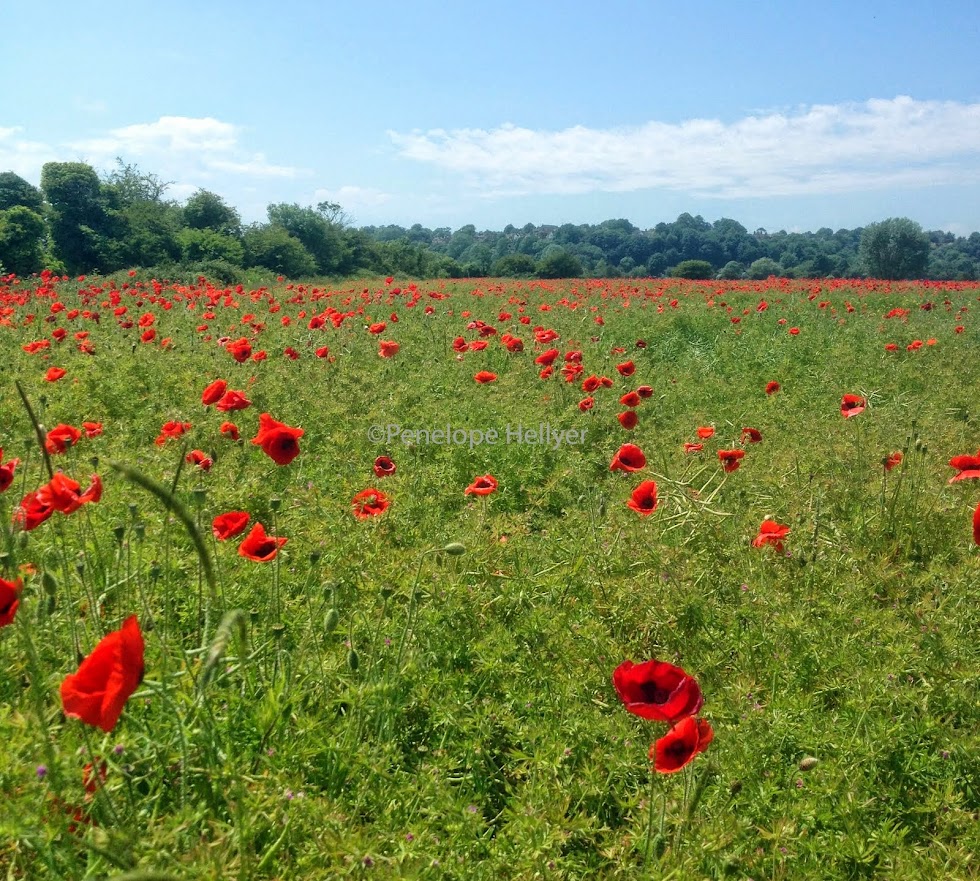 |
| A view from the bottom gate |
It is racing towards ten years since I gave up my Sussex garden
but the memories of its beauty and tranquility do not lessen. I still miss it
but no longer pine, knowing that another family enjoy the garden as much as we did: and now when I look back at the projects that we undertook I marvel
at the energy we both had. Life is so much different now...less stressful
and more tranquil as many may think befits our age but I long for the English
countryside and all the wonderful garden plants that grow so much easier there
than in Italy. The vista was awash with different varieties of daffodils, the majority planted in the late 1930s/40s when Arthur and Gay were planning to run the garden as a smallholding, many clumps were lost beneath the every maturing conifers which flanked the edge of the front vista. Many more were planted in the 'back' garden where the ground levelled out. These were picked, boxed and sold to local nurseries and taken by rail to London. Once retired Gay had a passion for the more unusual introductions of the late 1960s/70s when the peachy trumpets and larger fully double daffodils were for sale.
 |
| The Camellia Grove |
The Camellia Grove
was created by Arthur and myself in the late 1970s moving large camellia plants
from their crowded situation to create a wide curve around the Styrax japonica. Like most
gardeners, no matter how experienced, we didn't allow enough space and by the
1990s these camellias were congested once more: now much too
large for me to deal with. On the woodland edge of this group was a Camellia
williamsonii which was at least 12 feet in height by that
time...always the first to flower, it became a traditional part of the indoor
Christmas decorations. The first camellias were planted on the west side of the property beneath the goat sheds but these never fared as well as the ones planted in the top arboretum.
 |
| Rhododendron 'Seta' |
Rhododendron 'Seta'
was the first rhododendron to flower and it was often frosted. We flung fleece
over it each winter to protect it from the worst weather but I think in
maturity and increased height Jack Frost always managed to damage the flowers. There were dozens of different rhododendron's planted at Orchards, many whose names were lost over the years. Gay loved the new small azaleas sporting purple and lilac flowers.
 |
| Daffodils beneath Gay's Oak |
Scilla messeniaca followed the snowdrops that were planted on this shady border (above) where both spilled over the narrow sandstone wall. A large yellow tree peony is the stick-like growth springing from their midst. I moved the scilla to other places around the garden where it performed differently in more light shade. I brought it with me to Italy where it behaves differently once again. Planted in Italy beneath an inherited acer, it becomes leggy and paler blue. But I am glad to have it nonetheless.
There were many, many other spring gems at Orchards, but these pictures bring back some happy memories.














